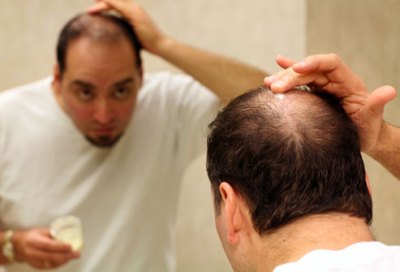Hair Loss: Which Treatments Are Truly Effective?
Many hair loss suffering men and women would do almost anything to get their hair back. But in a world full of gimmicks, clever marketing and scams, how can you be sure which treatments for baldness really work?
Drugs for Genetic Balding
To date, the only FDA approved treatments proven effective to treat genetic hair loss include Propecia (finasteride) and Rogaine (minoxidil). When used together, these two drugs are said to have a synergistic effect and significantly increase the chances of slowing down, stopping or even reversing the effects of male pattern baldness. But how do these drugs work?
Propecia For Male Pattern Baldness
Propecia comes in the form of a pill and contains 1mg of the active ingredient finasteride. This antiandrogen works to inhibit the production of dihydrotestosterone or DHT by stopping the male hormone testosterone from bonding with 5-alpha-reductase enzymes. Because DHT is the hormone responsible for carrying out the hereditary balding process, preventing its production promotes a high rate of successful hair loss treatment. Propecia should be taken once daily for maximum effectiveness.
Propecia is for men only and comes with a laundry list of rare but very possible side effects. The most concerning for most men are sexually related. Nonetheless, most hair restoration physicians agree that Propecia is still the most effective drug for androgenic alopecia on the market and men who start taking Propecia early have the greatest chance of keeping their existing hair.
Rogaine for Treating Hair Loss
Rogaine comes in either a liquid or foam form and is applied topically to the scalp. Rogaine’s active ingredient minoxidil is considered a hair growth stimulator and works to revitalize shrunken hair follicles when applied to the affected area. How minoxidil precisely works to stimulate hair regrowth is a bit of a mystery but has been proven effective and acquired an FDA approval for treating hair loss after rigorous testing. Read below for more information on minoxidil and what we know.

Minoxidil is a vasodilator which relax both veins and arteries in the body and thus, minoxidil was originally used as an oral treatment to lower blood pressure. However, due to unwanted side effects associated with taking oral minoxidil, it is no longer used for this purpose. But something unusual and unexpected was accidentally discovered when experimenting with this medication. It was discovered that minoxidil when applied topically could stimulate hair regrowth. Thus, scientists began experimenting with its use as a topical treatment for genetic balding. And because the amount of minoxidil absorbed into the blood stream is minimal when applied directly to the scalp rather than orally, any potential side effects were reported as rare and minimal.
Low Level Laser Therapy and the HairMax Lasercomb
Whether or not laser therapy works to treat hair loss is heavily debated amongst expert hair restoration physicians. While some reject its use entirely, others use it regularly to treat patients at their hair restoration clinic. The HairMax LaserComb’s somewhat recent FDA “clearance” (as opposed to an FDA “approval”) based on substantial equivalence to previous laser devices has further stirred this controversy. So does laser therapy work to treat hair loss? Most reputable hair loss doctors who believe it can help agree that laser therapy is much better at stopping genetic baldness from progressing rather than regrowing new hair. Some physicians I’ve spoken to who use laser therapy regularly at their hair clinic have reported hair count increases in some of their patients however, to date, I haven’t seen or heard of any laser treatment patients report any significant cosmetic improvement from laser therapy alone.
Alternative Hair Loss Treatments
While some alternative treatments include some scientific backing and realistic “success” stories, new so called “revolutionary” hair loss treatments arrive at the scene almost weekly boasting and making major claims of regrowing hair. Unfortunately, the reality of what these treatments can accomplish are seldom discussed and are tightly packed in clever marketing campaigns. Thus, balding men and women are advised to thoroughly research all treatments they are considering before buying into promotional propaganda.
Conclusion
Unfortunately, no non-surgical hair restoration product is proven to grow hair in completely bald areas. Only hair transplant surgery can do that. Like any other surgery however, hair transplantation comes with a long list of advantages, disadvantages and risks. Thus, hair loss suffering men and women considering hair transplant surgery should take their time to learn everything they can about the procedure and the physicians regularly performing them.





0 Comments
You can be the first one to leave a comment.